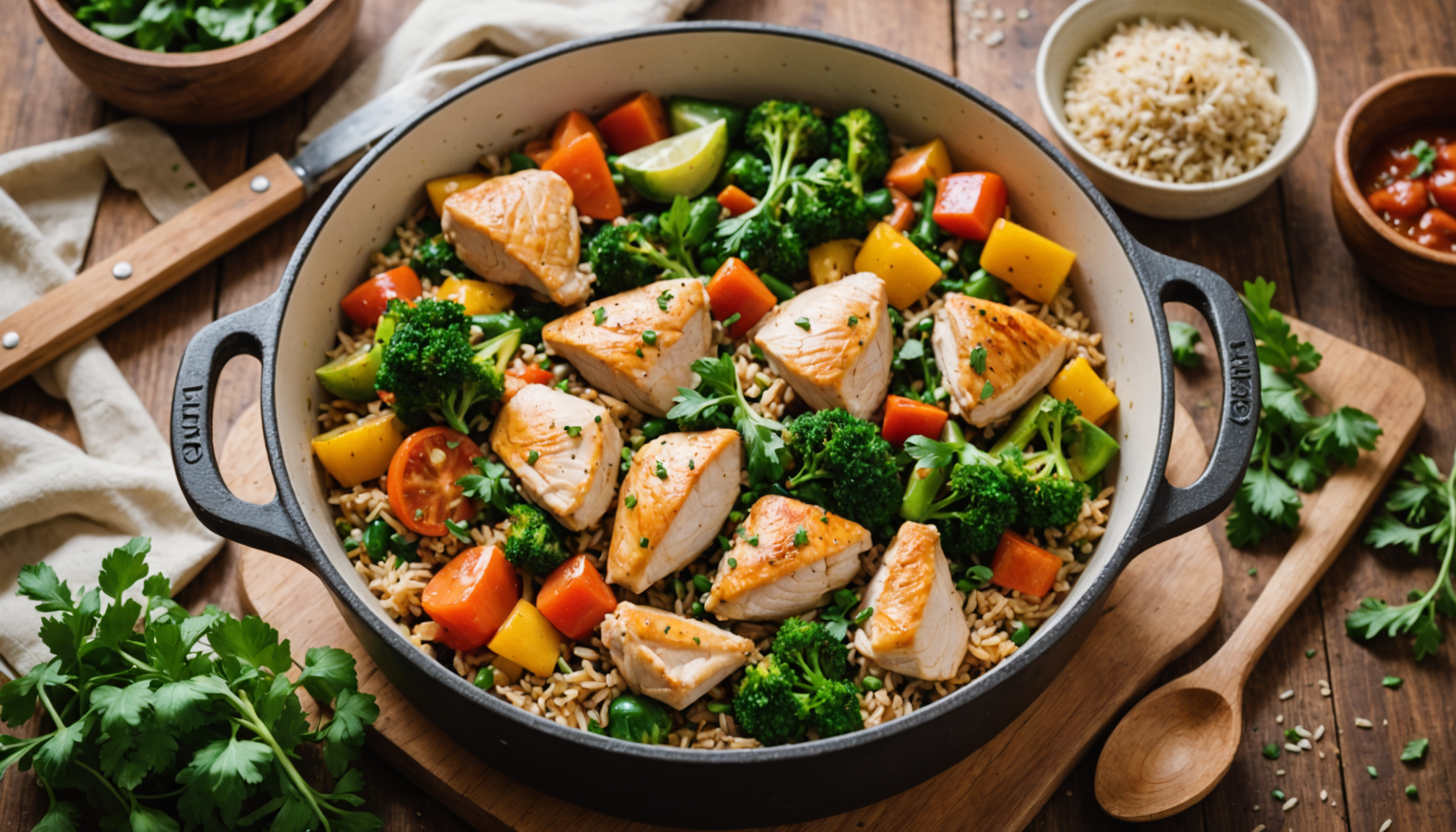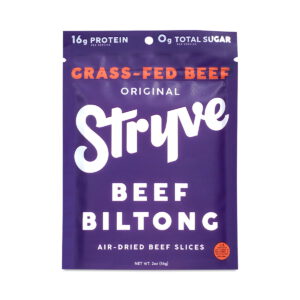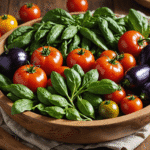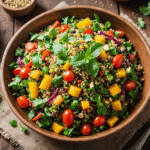- Time-saving meal planning strategies
- Efficient grocery shopping methods
- One-pot cooking techniques
- Smart batch cooking ideas
- Quick prep and cooking tools
- Healthy shortcuts for common recipes
Grocery shopping can often feel like a daunting task, but with the right strategies, it can become a breeze. To maximize your time and ensure you’re filling your cart with the best options for healthy eating, here are some entertaining yet practical shopping tips designed for everyone—from busy families to fitness enthusiasts and conscious vegans.
First and foremost, create a shopping list before you head out or start browsing online. Organizing your list by sections of the store—produce, grains, proteins, etc.—can save you precious time. This way, you won’t be looping back to aisles you’ve already been to. For online grocery shopping, many websites allow you to save your shopping lists for future use, making reordering a breeze.
When it comes to healthy foods, locally sourced items can often be fresher and more nutritious than those that travel from far away. Look for farmers’ markets in your area or grocery stores featuring local produce. Not only does this support your community, but it also introduces delicious seasonal options such as berries in summer or squash in fall. Incorporating these items into your meals ensures a variety of flavors and nutrients.
If you’re following a vegan lifestyle or just trying to incorporate more plant-based meals, stock up on versatile staples like lentils, quinoa, and chickpeas. These ingredients are packed with protein and can be used in numerous dishes. For a budget-friendly option, consider frozen fruits and vegetables. They’re often just as nutritious as fresh ones and last longer, which means less waste!
For those who are mindful of their budget, look for sales and in-store coupons. Many grocery stores offer weekly discounts that can include organic products. Don’t hesitate to try generic brands; they often provide similar quality at lower prices. Additionally, check for bulk sections where you can buy grains, nuts, and spices, saving you money and helping to reduce packaging waste.
Safety is crucial, especially when shopping for ingredients. Always check expiration dates and inspect packaging for damages. When buying meat or dairy, ensure that the products are kept at the correct temperatures in the store. If shopping online, opt for retailers that guarantee proper handling and offer secure payment methods. Reading reviews can also provide insight into the reliability of the seller.
Lastly, don’t forget to leverage technology. Use smartphone apps to not only keep track of your list but also to find the best deals in your area. Many apps allow you to scan items for healthier alternatives and provide nutrition information. This is especially handy for fitness enthusiasts looking to maintain their goals while shopping.
With these time-saving tips and strategies, you’ll not only shop smarter but also enjoy a variety of nutritious meals that align with your lifestyle, all while saving time for more important things in life!
Efficient grocery shopping methods
Efficient grocery shopping methods play a vital role in embracing a healthier eating lifestyle while minimizing the time spent in stores. One of the best practices to adopt is utilizing a digital grocery list, which can not only help you stay organized but also streamline your shopping process. Many apps allow you to categorize items according to specific sections in the store. This means less back and forth and ultimately reduces the time spent wandering the aisles. Furthermore, these apps can often sync across devices, allowing family members to add items in real time, ensuring nothing gets forgotten.
Another smart shopping method is to time your visits strategically. Grocery stores are often busiest during weekends or late afternoons. Opting for early mornings or late evenings on weekdays can result in a more relaxed shopping experience, enabling a more focused approach to keeping your shopping efficient. Additionally, take advantage of store loyalty programs, which frequently provide exclusive discounts and promotions, making it easier to save money on healthy choices.
When it comes to sourcing staples for healthy meals, consider creating a core inventory that you regularly restock. This should include quality proteins, whole grains, and a variety of fruits and vegetables that can form the basis of meals. Having a well-stocked pantry and refrigerator means you can whip up healthy meals on the fly without the need for extensive shopping trips. Below is a breakdown of essential pantry items that are versatile and contribute to quick, nutritious meals:
| Category | Essential Items | Benefits |
|---|---|---|
| Protein | Lentils, chickpeas, canned tuna, eggs | Quick to prepare, high in protein, filling |
| Grains | Quinoa, brown rice, whole grain pasta, oats | High in fiber, provides lasting energy |
| Vegetables | Frozen spinach, mixed vegetables, canned tomatoes | Long shelf life, easy to incorporate into meals |
| Fruits | Apples, bananas, frozen berries | Nutritious snacks, great for smoothies or desserts |
Another effective approach is to leverage local delivery services or grocery pickup options. Many supermarkets now offer this service, allowing you to order your groceries online and pick them up without needing to scour the store. These services often save time by letting you browse ingredients at your leisure while checking for recipes or meal plans. Plus, many apps feature recipe suggestions based on the items in your cart, taking the guesswork out of meal prepping.
Don’t overlook the importance of impulse control while shopping. Stick rigidly to your list and avoid buying extra items that may not fit within your healthy eating goals. Using a set budget can also help you stay focused on essential ingredients while limiting unnecessary purchases. Combining these efficient grocery shopping methods will empower you to make healthier choices, align closely with your dietary goals, and save precious time that can be redirected toward cooking and enjoying meals with loved ones.
One-pot cooking techniques

One-pot cooking techniques can be a game-changer for busy families and health-conscious individuals aiming for quick and nutritious meals. The beauty of one-pot dishes lies in their simplicity—minimizing mess and maximizing flavor all in one container. To ensure your cooking ventures are both delightful and healthy, here are some practical tips and tricks.
First and foremost, select the right ingredients. A well-rounded one-pot meal can feature a balance of whole grains, a variety of vegetables, and lean proteins. Start with a base like brown rice or quinoa, which not only provides fiber but also complements a range of flavors. For protein, consider options such as chicken, tofu, or legumes like lentils and beans to keep the meal hearty and satisfying.
- Stir-fry styles: A quick stir-fry using a mix of colorful vegetables, your choice of protein, and a simple sauce made from soy sauce, garlic, and ginger can be delightful. This method promotes nutrient retention because it cooks food quickly at high heat.
- Soup or stew: For colder months, soups and stews can be packed with seasonal vegetables, beans, and bones or vegetable broth for depth of flavor. Just throw everything into one pot, let it simmer, and enjoy a comforting bowl full of nutrients.
- Casserole dishes: Layer whole grains, vegetables, proteins, and a sauce in a single baking dish. Cover and bake for a wonderfully easy dinner that will leave everyone satisfied.
Don’t forget about herbs and spices; they can elevate your one-pot dishes immensely. Fresh herbs like parsley or cilantro can brighten up the meal, while spices such as cumin or paprika provide warmth and depth. Keep a selection of dried herbs on hand, as these are perfect for time-saving tips that don’t compromise flavor.
Planning is essential when it comes to one-pot cooking. When preparing your grocery list, think about what you can pre-chop or prep ahead of time. For instance, vegetables can be washed, peeled, and cut days in advance to cut down on cooking time. If you’re short on time, consider buying pre-cut veggies available at many grocery stores. However, be cautious with container integrity to ensure safety and freshness.
For the home cooks with dietary restrictions or those on a vegan lifestyle, it’s crucial to include a variety of ingredients. Look for plant-based protein sources such as tempeh or seitan, which can absorb flavors beautifully in one-pot meals. Another tip is to use seasonal vegetables to cut grocery costs while maximizing both flavor and nutrition. Online shopping can help you compare prices from different stores before you buy, making it easier to stick to a budget and focus on health.
Moreover, think about cooking ahead. Batch cooking larger portions of one-pot meals can save you time during the busy week. Simply cook it all at once, allow it to cool, and store it in portion-sized containers in the fridge or freezer. This not only helps in meal prep but also ensures you have healthy options readily available—perfect for those hurried evenings.
Lastly, stay aware of safe food handling practices whether you’re shopping online or in person. Always check that fresh ingredients are stored at the correct temperature, especially proteins. When ordering groceries online, choose reputable sites that prioritize food safety and deliver with care. Look for products clearly labeled with pack dates and expiration dates, ensuring you’re selecting the freshest items for your meals.
By implementing these one-pot cooking techniques, you’ll streamline your meal preparation, enjoy nutritious, flavorful dishes, and save both time and effort—giving you more quality moments to share around the dinner table.
Smart batch cooking ideas
Batch cooking is an intelligent approach that transforms the way you prepare meals, offering endless benefits while greatly enhancing efficiency in the kitchen. By dedicating a few hours one day a week to cooking larger quantities of food, you can create a stockpile of meals that are ready to heat and eat throughout the week, effectively minimizing daily cooking time and ensuring healthy eating.
One of the primary strategies is to choose recipes that hold up well in the fridge or freezer. Dishes like soups, stews, casseroles, and grain bowls are excellent candidates for batch cooking, as they tend to taste even better after the flavors meld together over time. For instance, a hearty lentil soup made in a big pot can be portioned out into containers, frozen, and pulled out for a quick meal later in the week.
To maximize your batch cooking efforts, consider prepping different components that can be mixed and matched. For example, cook a large batch of quinoa or brown rice as a base, steam a variety of seasonal vegetables, and grill or sauté chicken or plant-based proteins. These building blocks can then be combined in different ways, allowing for quick and healthy meals while keeping monotony at bay.
Utilizing freezer-friendly storage is crucial for your batch cooking success. Invest in quality containers that are microwave-safe and freezer-friendly. Glass containers with airtight lids are a popular choice because they prevent freezer burn and allow you to see what’s inside. Label each container with the meal name and date using washable markers or stickers to help keep your meals organized and ensure food safety.
“The key to successful batch cooking is preparation. Take time to plan your meals, and the payoff will come in the form of time saved during your busy week.”
Another time-saving tip to enhance efficiency is to cook similar items together. For example, if you’re roasting a pan of vegetables, toss in a few sweet potatoes or proteins on the same tray. This not only saves energy but allows for easy clean-up afterward. You’ll be surprised at how much you can prepare simultaneously when you take full advantage of your oven or stovetop.
Don’t forget about transforming leftovers into new meals. If you find that you have extra roasted vegetables, toss them into an omelet for breakfast or mix them with grains for a nutritious lunch. Creative use of leftovers helps prevent waste and keeps your meals diverse and exciting.
When planning your batch cooking day, be mindful of time management. Set aside specific time blocks dedicated solely to cooking. This focused approach can help you stay on task and avoid distractions. You can even turn cooking into a family affair: assign different tasks to each family member, whether it be chopping vegetables, stirring pots, or packaging meals. Not only does this make the process quicker, but it also promotes healthy eating habits within the family.
By integrating smart batch cooking ideas into your weekly routine, you’ll not only save precious time during the week but also ensure your meals are nutritious and aligned with your healthy eating goals. Whether you’re managing a busy household, trying to maintain a balanced diet, or simply looking to make cooking less of a chore, batch cooking can be your secret weapon in the kitchen.
Quick prep and cooking tools

Incorporating quick prep and cooking tools into your kitchen routine can significantly enhance your efficiency and enjoyment of healthy eating. Investing in the right tools not only streamlines your cooking process but also opens up opportunities to explore a variety of healthy recipes with minimal effort. Essential kitchen gadgets and utensils can help you save time and achieve consistent results.
Start with a high-quality chef’s knife. A sharp, well-balanced knife is crucial for speeding up prep work and making even the most tedious chopping tasks a breeze. Look for one that feels comfortable in your hand, as it’ll quickly become your best kitchen companion. Pair this with a cutting board that suits your style—whether it’s wood for its aesthetic feel or plastic for easy sanitation.
Additionally, consider investing in a food processor. This versatile tool can simplify many of your tasks, from chopping vegetables to making sauces and dips. By using a food processor, you can achieve finely chopped ingredients and smooth mixtures in seconds rather than minutes, which is a significant time-saving tip for any healthy eating plan.
Another invaluable gadget is an instant pot or pressure cooker. These appliances can drastically cut down cooking times for grains, beans, and even tougher cuts of meat. The ability to cook meals quickly without sacrificing flavor or nutritional value makes them a staple for busy individuals. You might find that you can whip up a nutritious stew or a batch of perfectly cooked quinoa in a fraction of the time you’d spend using traditional methods.
Don’t forget about multifunctional appliances. Tools such as an air fryer or a slow cooker can provide quicker cooking times and healthier meal options without the extra oil often required for frying. They often come with multiple settings, allowing you to bake, grill, or steam, adapting to your various cooking needs throughout the week.
When it comes to preparing ingredients, vegetable peelers and mandoline slicers can save you significant time, especially for meals that require a lot of veggie prep. With a mandoline slicer, you can achieve uniform cuts quickly, making your salads and stir-fries not only healthier but visually appealing as well.
Finally, invest in quality storage containers that are both functional and practical. Having a set of containers in various sizes for prepped ingredients, leftovers, or batch-cooked meals can make it easier to stay organized and keep your food fresh. Opt for glass containers with airtight lids to minimize waste and maximize freshness.
By integrating these quick prep and cooking tools into your routine, you’ll pave the way for a more streamlined cooking process, allowing you to embrace the joy of healthy eating while saving valuable time in your day-to-day life.
- What are some essential kitchen tools for efficient cooking?
- Key tools include a sharp chef’s knife, food processor, cutting board, and instant pot. These tools can significantly reduce prep time and make cooking healthier meals more enjoyable.
- How can I make meal prep faster?
- Focus on having the right tools like a food processor, and invest in multi-functional appliances. Plan your meals and prepare ingredients ahead of time to save time during the week.
- Are pre-cut vegetables healthier than whole ones?
- Pre-cut vegetables can save time, but they may lose some nutrients if stored for long periods. Opt for freshly pre-cut options at the store to ensure you’re still getting the health benefits.
- What should I look for in a good knife?
- A good knife should be sharp, comfortable to hold, and slightly weighted for balance. Look for quality materials such as high-carbon stainless steel for durability.
- Can an air fryer help with healthy eating?
- Absolutely! An air fryer can cook food with significantly less oil compared to traditional frying methods, making it a great option for creating healthier meals without sacrificing taste.
- How do I store prepped ingredients safely?
- Use airtight containers made from glass or BPA-free plastic. Label with dates, and store ingredients in the fridge or freezer to maintain freshness and prevent food spoilage.
- What is the best way to clean and maintain kitchen tools?
- Follow the care instructions provided with each tool. Generally, handwashing with gentle soap and avoiding abrasive cleaners helps prolong the life of your knives and utensils.
Healthy shortcuts for common recipes
Finding healthy shortcuts for common recipes can make a significant difference in your cooking routine, especially when you’re short on time or juggling a busy lifestyle. One of the most effective strategies is to embrace pre-prepared ingredients without sacrificing the quality of your meals. For instance, buying pre-washed and cut vegetables can save you precious minutes in the kitchen. Many grocery stores now offer a wide variety of organic options, allowing you to maintain your commitment to healthy eating while taking a shortcut.
Another fantastic time-saving tip is to utilize canned goods wisely. Canned beans, for example, are a great source of protein and fiber, and they only require rinsing before adding to your dishes. Similarly, canned tomatoes can provide a rich base for sauces, soups, or stews without the need for lengthy chopping or cooking times. Just be sure to check the labels for added sugars or preservatives—look for those that are low-sodium or BPA-free for optimal health.
Speaking of sauces, consider making a large batch of homemade pesto or tomato sauce ahead of time, and freeze it in individual portions. This way, when you’re in a pinch, you can quickly combine it with pasta, grains, or roasted veggies for a meal that feels gourmet but takes mere minutes to prepare.
For those who love to incorporate grains into their meals, opt for quick-cooking varieties like quinoa or pre-cooked brown rice, which are available in many stores. These grains can serve as a base for various dishes and can be ready in a flash, allowing you to focus on adding fresh toppings or proteins.
If you’re inclined to dive deeper into healthy shortcuts, consider investing in a high-quality blender. Smoothies are a great way to sneak in greens while enjoying fruit and protein in a delicious form. You can prep smoothie bags—fruit, greens, and any additional extras like chia seeds or nut butter—store them in the freezer, and just blend in the morning for a nutritious breakfast on the go.
Cutting prep time can also be achieved with clever techniques such as the sheet pan dinner. Simply place your protein and an assortment of veggies on a baking sheet, season, and roast. Not only do you get a delicious all-in-one meal, but it also makes for easy clean-up, leaving you with more time to relax after a busy day.
If you’re looking to add more nutrients without the hassle, keep frozen fruits and vegetables on hand. They are picked at peak ripeness and quickly frozen, retaining their nutritional value, and can be seamlessly added into soups, smoothies, or stir-fries. Plus, they eliminate the worry of spoilage that often comes with fresh produce.
Safety should never be overlooked, even when it comes to shortcuts. When buying pre-packaged items, ensure that the packaging is intact and check the expiration dates. Online grocery shoppers should always choose reputable retailers that prioritize food safety and consumer protection. Look for security features when making purchases, such as secure payment options and customer reviews to gauge the reliability of the store.
With these shortcuts, you’ll transform healthy eating from a time-consuming task into an enjoyable and efficient part of your day. Embrace these practical ideas and discover how easy and satisfying it can be to put delicious meals on the table with minimal effort!
New Customers Offer!
Free Gift for the new customer
$24 Value, When You Subscrib Visit Thrive Market












